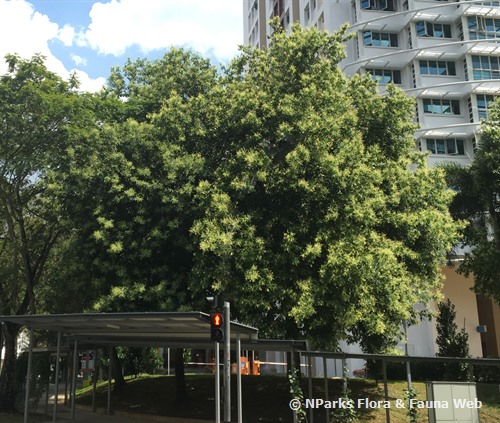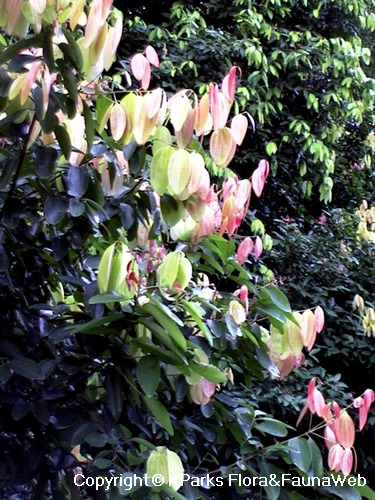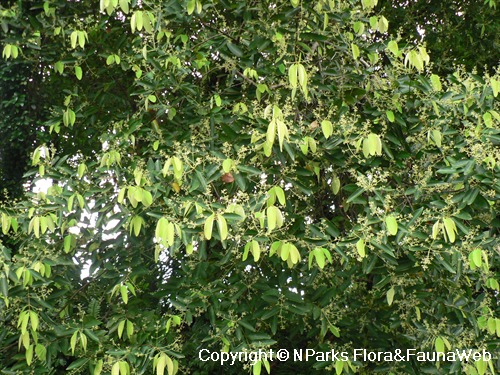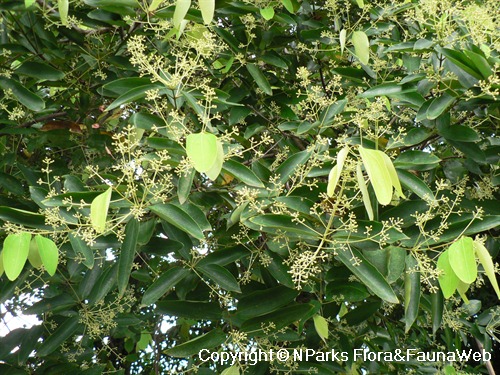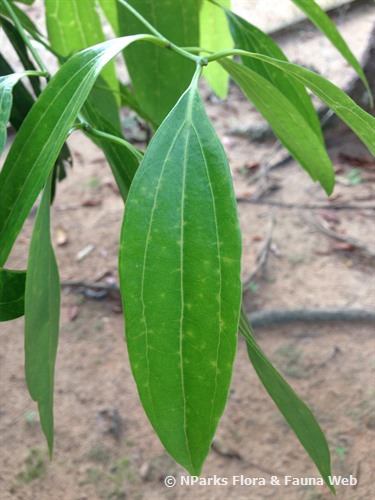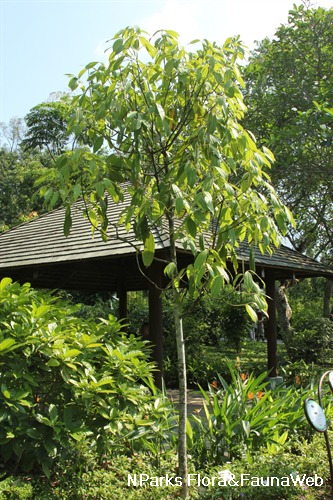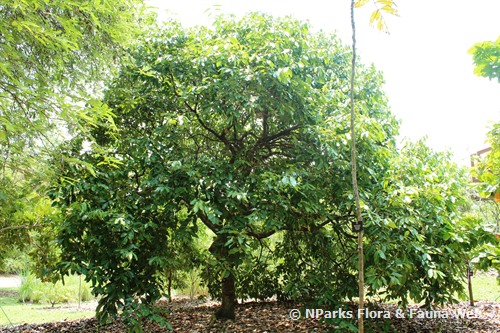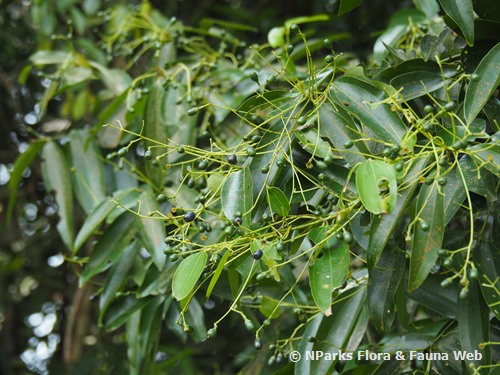
Back
Cinnamomum iners Reinw. ex Blume
| Family Name: | Lauraceae |
| Common Name: | Wild Cinnamon, Clove Cinnamon, Kayu Manis, Kayu Manis Hutan, Medang Teja, Teja Lawang, 大叶桂 |
Name
Classifications and Characteristics
| Plant Division | Angiosperms (Flowering Seed Plants) |
|---|---|
| Plant Growth Form | Tree |
| Lifespan (in Singapore) | Perennial |
| Mode of Nutrition | Autotrophic |
Biogeography
| Native Distribution | India, China to Southeast Asia, including Singapore. |
|---|---|
| Native Habitat | Terrestrial |
| Local Conservation Status | Native to Singapore (Least Concern (LC)) |
Description and Ethnobotany
| Growth Form | A small evergreen tree with a bushy, rounded crown that grows up to 10-15 m tall. |
|---|---|
| Trunk | The trunk is straight with smooth, greyish brown outer bark and pinkish inner bark. The bark has a light, cinnamon-like fragrance. Sapwood is white. |
| Foliage | Dark green leaves are elliptic to oblong with entire leaf margin and 3 distinct veins that run lengthwise. Young foliage is initially light pinkish red, but gradually becomes cream, then yellowish green and finally dark green. Crushed leaves emit a light, cinnamon-like fragrance. |
| Flowers | Cream-coloured to light yellow flowers are bisexual or unisexual and produce a pungent odour. They are arranged in branched inflorescences known as panicles that are located in the leaf axils (between the leaf and stem) or branch tips. |
| Fruit | Round or ellipsoid, fleshy fruits are known as berries. Initially dark green with yellow spots, berries are purplish black at maturity. |
| Habitat | Commonly found in moist and open areas of primary and secondary lowland forests and hill forests. |
| Associated Fauna | Squirrels, bats and birds consume the fruits, thus helping to disperse the seeds. Host plant for: Common Mime (Chilasa clytia clytia); Common Bluebottle (Graphium sarpedon luctatius) |
| Cultivation | This species should be planted in fertile, well-drained soil. It is susceptible to termites and basal rot fungus. |
| Ethnobotanical Uses | Food (Herb or Spice): The bark produces an inferior grade of cinnamon. In rural areas, the leaves are used to sweeten drinking water. Both the leaves and wood are used as a spice. Medicinal: Medicinal properties can be found in all parts of the tree. The wood is used to reduce fever, while other plant parts have been used to treat gastrointestinal and urinary problems, childbirth complications, rheumatism, and flatulence. |
Landscaping Features
| Desirable Plant Features | Ornamental Foliage |
|---|---|
| Landscape Uses | Parks & Gardens, Shade Providing Tree / Palm |
| Thematic Landscaping | Butterfly Garden |
Fauna, Pollination and Dispersal
| Fauna Pollination Dispersal Associated Fauna | Butterfly Host Plant (Leaves) |
|---|
Plant Care and Propagation
| Light Preference | Full Sun |
|---|---|
| Water Preference | Moderate Water |
| Plant Growth Rate | Fast to Moderate |
| Rootzone Tolerance | Well-Drained Soils, Fertile Loamy Soils |
| Propagation Method | Seed |
Foliar
| Mature Foliage Colour(s) | Green |
|---|---|
| Mature Foliage Texture(s) | Smooth, Glossy / Shiny |
| Prominent Young Flush Colour(s) | Pink |
| Young Flush Texture(s) | Smooth, Glossy / Shiny |
| Foliar Shape(s) | Non-Palm Foliage |
| Leaf Area Index (LAI) for Green Plot Ratio | 3.0 (Tree - Intermediate Canopy) |
Floral (Angiosperm)
| Flower Colour(s) | White, Yellow / Golden |
|---|
Fruit, Seed and Spore
| Mature Fruit Colour(s) | Black |
|---|---|
| Mature Fruit Texture(s) | Smooth |
Image Repository
Others
| Master ID | 1513 |
|---|---|
| Species ID | 2806 |
| Flora Disclaimer | The information in this website has been compiled from reliable sources, such as reference works on medicinal plants. It is not a substitute for medical advice or treatment and NParks does not purport to provide any medical advice. Readers should always consult his/her physician before using or consuming a plant for medicinal purposes. |

